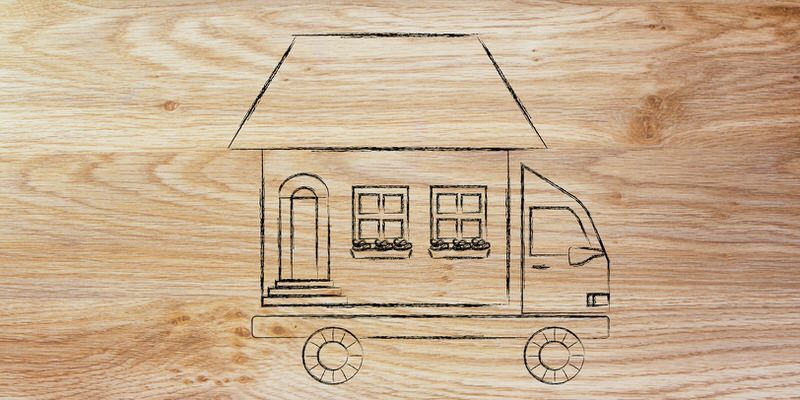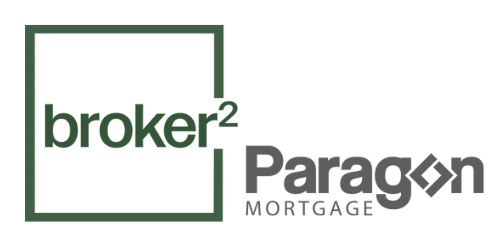As Simple as Porting Your Mortgage!
Sukh Sohal • November 3, 2020

As simple as porting your mortgage! Said by no one ever. The truth is, there is nothing simple about porting your mortgage.
"Porting your mortgage" involves transferring the remainder of your existing mortgage term, outstanding principal balance, and interest rate to a new property. This is of course, if you are selling your current home and buying a new one.
Despite what some of the big banks would lead you to believe, porting your mortgage is not an easy process. It's not a magic process that guarantees you will qualify for the purchase of a new property using the mortgage you had on a previous property. In addition to completely re-qualifying for the mortgage, and having to qualify the property you are purchasing, there are a lot of moving parts that come into play. It seems that executing a port flawlessly is like having the stars align perfectly, chances are, it's not going to happen. Here are a few reasons why:
- You may not qualify for the mortgage.
Let's say you are moving to a new city to take a new job, if you are relying on porting your mortgage in order to buy a new house, you will have to substantiate your new income. If you are on probation, or have changed professions, there is a chance the lender will decline your application. Porting a mortgage is a lot like qualifying for a new mortgage, just with more conditions.
- The property you are buying has to be approved.
So let's say that your income is in good shape, and that you qualify for the mortgage, the property you want to purchase has to be approved as well. Just because they accepted your last property as collateral for the mortgage, doesn't mean the lender will accept the new property. An appraisal will be required, and the condition of the property you are buying will be scrutinized.
- Value's are rarely the same.
How often do you buy a property that is exactly the same value as the one you just sold? Not very often. And when it comes to porting your mortgage, if the value of the new home is higher than the outstanding balance on your existing mortgage, you will most likely have to take a blended rate on the new money, which could increase your payment. If the property value is considerably less, you might actually incur a penalty to reduce the total mortgage amount. If the value of the properties are different, the terms of your mortgage will be amended anyway!
- You still need a downpayment.
Porting a mortgage isn't just a simple case of swap one property for the another and keep the same mortgage. You're still required to come up with a downpayment on the new property.
- You will most likely have to pay a penalty.
When you sell your house, most lenders will charge the full penalty and take it from your sale proceeds of your property. They will of course refund it back to you when you execute the port and purchase the new property. So if you were relying on the proceeds of sale to come up with your downpayment on the property you are purchasing, you might have to make other arrangements.
- Timelines almost never work out.
It's rarely a buyers and a sellers market at the same time. So although you may be able to sell your property overnight, you might not be able to find a suitable property to buy. Alternatively, you might be able to find many suitable properties to purchase while your house sits on the market with no showings. And when you do end up selling your property, and finding a new property to buy, chances are the closing dates won't match up perfectly.
- Different lenders have different port periods.
This is where the fine print in the mortgage documents comes into play. Did you know that depending on the lender, the period of time you have to port your mortgage can range from 1 day to 6 months? So if it's 1 day, your lawyer will have to close both the sale of your property and the purchase of your new property on the same day, or the port won't work. Or with a longer port period, you run the risk of selling your house with the intention of porting the mortgage, only to not be able to find a suitable property to buy.
So as you can see, although porting your mortgage may make sense if you have a low rate that you want to carry over to a property of similar value, it is always a good idea to get professional mortgage advice and look at all your options.
Please contact us anytime if you would like to discuss mortgage financing, we'd love to work with you!
RECENT POSTS

Need to Free Up Some Cash? Your Home Equity Could Help If you've owned your home for a while, chances are it’s gone up in value. That increase—paired with what you’ve already paid down—is called home equity, and it’s one of the biggest financial advantages of owning property. Still, many Canadians don’t realize they can tap into that equity to improve their financial flexibility, fund major expenses, or support life goals—all without selling their home. Let’s break down what home equity is and how you might be able to use it to your advantage. First, What Is Home Equity? Home equity is the difference between what your home is worth and what you still owe on it. Example: If your home is valued at $700,000 and you owe $200,000 on your mortgage, you have $500,000 in equity . That’s real financial power—and depending on your situation, there are a few smart ways to access it. Option 1: Refinance Your Mortgage A traditional mortgage refinance is one of the most common ways to tap into your home’s equity. If you qualify, you can borrow up to 80% of your home’s appraised value , minus what you still owe. Example: Your home is worth $600,000 You owe $350,000 You can refinance up to $480,000 (80% of $600K) That gives you access to $130,000 in equity You’ll pay off your existing mortgage and take the difference as a lump sum, which you can use however you choose—renovations, investments, debt consolidation, or even a well-earned vacation. Even if your mortgage is fully paid off, you can still refinance and borrow against your home’s value. Option 2: Consider a Reverse Mortgage (Ages 55+) If you're 55 or older, a reverse mortgage could be a flexible way to access tax-free cash from your home—without needing to make monthly payments. You keep full ownership of your home, and the loan only becomes repayable when you sell, move out, or pass away. While you won’t be able to borrow as much as a conventional refinance (the exact amount depends on your age and property value), this option offers freedom and peace of mind—especially for retirees who are equity-rich but cash-flow tight. Reverse mortgage rates are typically a bit higher than traditional mortgages, but you won’t need to pass income or credit checks to qualify. Option 3: Open a Home Equity Line of Credit (HELOC) Think of a HELOC as a reusable credit line backed by your home. You get approved for a set amount, and only pay interest on what you actually use. Need $10,000 for a new roof? Use the line. Don’t need anything for six months? No payments required. HELOCs offer flexibility and low interest rates compared to personal loans or credit cards. But they can be harder to qualify for and typically require strong credit, stable income, and a solid debt ratio. Option 4: Get a Second Mortgage Let’s say you’re mid-term on your current mortgage and breaking it would mean hefty penalties. A second mortgage could be a temporary solution. It allows you to borrow a lump sum against your home’s equity, without touching your existing mortgage. Second mortgages usually come with higher interest rates and shorter terms, so they’re best suited for short-term needs like bridging a gap, paying off urgent debt, or funding a one-time project. So, What’s Right for You? There’s no one-size-fits-all solution. The right option depends on your financial goals, your current mortgage, your credit, and how much equity you have available. We’re here to walk you through your choices and help you find a strategy that works best for your situation. Ready to explore your options? Let’s talk about how your home’s equity could be working harder for you. No pressure, no obligation—just solid advice.

Ready to Buy Your First Home? Here’s How to Know for Sure Buying your first home is exciting—but it’s also a major financial decision. So how can you tell if you’re truly ready to take that leap into homeownership? Whether you’re confident or still unsure, these four signs are solid indicators that you’re on the right path: 1. You’ve Got Your Down Payment and Closing Costs in Place To purchase a home in Canada, you’ll need at least 5% of the purchase price as a down payment. In addition, plan for around 1.5% to 2% of the home’s value to cover closing costs like legal fees, insurance, and adjustments. If you’ve managed to save this on your own, that’s a great sign of financial discipline. If you're receiving help from a family member through a gifted down payment , that works too—as long as the paperwork is in order. Either way, having these funds ready shows you’re prepared for the upfront costs of homeownership. 2. Your Credit Profile Tells a Good Story Lenders want to know how you manage debt. Before they approve you for a mortgage, they’ll review your credit history. What they typically like to see: At least two active credit accounts (trade lines) , like a credit card or loan Each with a minimum limit of $2,000 Open and active for at least 2 years Even if your credit isn’t perfect, don’t panic. There may still be options, such as using a co-signer or working on a credit improvement plan with a mortgage expert. 3. Your Income Can Support Homeownership—Comfortably A steady income is essential, but not all income is treated equally. If you’re full-time and past probation , you’re in a strong position. If you’re self-employed, on contract, or rely on variable income like tips or commissions, you’ll generally need a two-year history to qualify. A general rule: housing costs (mortgage, taxes, utilities) should stay under 35% of your gross monthly income . That leaves plenty of room for other living expenses, savings, and—yes—some fun too. 4. You’ve Talked to a Mortgage Professional Let’s be real—there’s a lot of info out there about buying a home. Google searches and TikToks can only take you so far. If you're serious about buying, speaking with a mortgage professional is the most effective next step. Why? Because you'll: Get pre-approved (and know what price range you're working with) Understand your loan options and the qualification process Build a game plan that suits your timeline and financial goals The Bottom Line: Being “ready” to buy a home isn’t just about how much you want it—it’s about being financially prepared, credit-ready, and backed by expert advice. If you’re thinking about homeownership, let’s chat. I’d love to help you understand your options, crunch the numbers, and build a plan that gets you confidently across the finish line—keys in hand.





